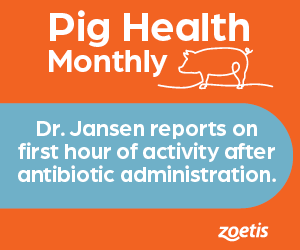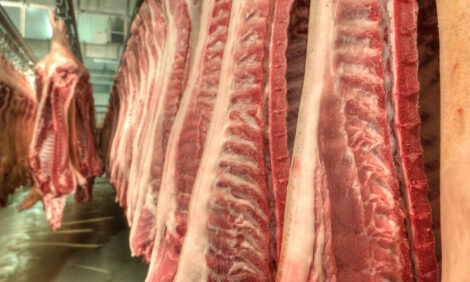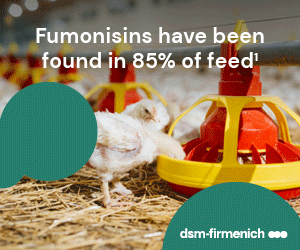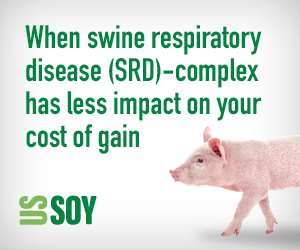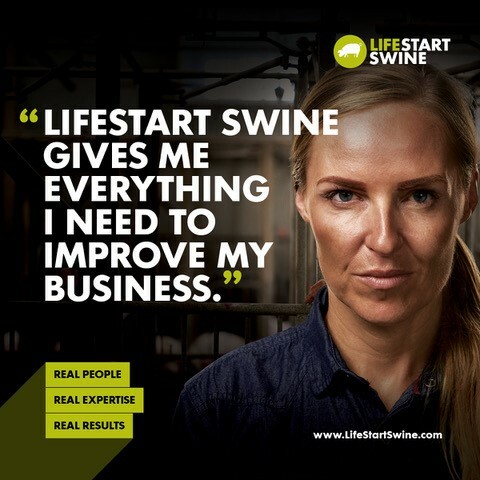



WPX: Genesus’ Jim Long gives global industry update
Jim Long, president/CEO of Genesus, shares a global industry overview including US prices, ASF in China and what to expect in Europe.Part of Series:
Next Article in Series >
“The US has really accelerated hog prices,” said Long. “They're approaching record high prices in the meat - were within 2 cents yesterday - it was $1.34 in the meat. I think the record high ever was July 14th, 2014 at $1.37. I expect over the next few weeks, we'll surpass that.”
The key reason for the price boost, according to Long, is strong domestic demand. Consumers have more disposable income as US wealth has increased during the pandemic.
“People have money, and they're buying pork - they're buying beef,” he said. “If you look at where pork prices are at today versus beef. Beef was 2.5 times the price higher, which is a true reflection of that continued demand, and it's going to keep pulling the hog price higher too.”
Another reason for the increased demand is due to the pandemic. The swine industry lost a significant level of money, resulting in liquation of the pig population.
“We’ve got less supply and greater demand. And at the same time, the US is exporting into Mexico strongly, because Mexico got hit hard by the pandemic on pork supply, and continued opportunities into China and other Asian countries, due to ASF creating a shortfall on their pork supply,” he said.
Asia market update
“We hear two things in China - you hear on one side that there's no big issue, and pork supply is increasing. But on the other side, the anecdotal things we hear indicate individual organizations are losing pigs,” he said.
“I was speaking to a Chinese owner a couple of weeks ago. He had 30,000 sows, but only has 10,000 left. Another group, one of the major groups in China, this public company announced a few weeks ago, they had lost 100,000 sows. We know of another one who lost 80,000. So I think it's real.”
Pig prices in China have come down from their record highs. But prices still remain significantly higher than two years ago.
“Everyone in the industry, whether it be the US, Canada, Europe or Asia, is being challenged by feed prices that have doubled. So the cost of production has gone up, which is going to slow down expansion in China very quickly, I think.”
Rebuilding the sow herd in China is underway but perhaps not as aggressively as some expected.
“There's two aspects to it. There are the major producers who have expanded very aggressively. Genesus does a global mega producer list. If you look at what the Chinese producers are claiming, the ones over 100,000 sows and what they gained over the last 12 months, they claim 4.8 million sows have been added, so huge numbers. But remember, these are all voluntary numbers. And some appear to be a little bit of a reach. I don't know what their definition of a sow is, because it's almost incomprehensible that logistically, some of the numbers could get done.”
ASF variant in China
“The variant, from everything you hear, came from the vaccines that were illegally made and used. The difficulty is that there's been more than one variant - it spread the disease more. When they vaccinate, they can't go in and blood test and select out the ones that have ASF,” he said. “Before what China was doing - they called it pulling the tooth. They'd go in, test, pull those ASF-positive pigs out. The fortunate thing with ASF, it doesn't spread fast and it was working. But now they went and vaccinated, they can't do that. So it's created some other complications for their industry.
“I don't see a lot being done to manage it going forward. There's so many pigs, and the logistics - they haven't put in strong rules about repopulation of farms. The challenge is not very long ago, they were getting over US$500 for a market hog. All you had to do is keep a pig alive, and you made a lot of money which was a huge incentive just to have pigs. In a way, it magnified the problem.”
Asked about reports suggesting some pigs on Chinese farms are being held back, causing extremely high weights, Long says it’s not concerning.
“We are seeing the same reports, but when you look at 400 million pigs in China, it's irrelevant. I think it's a noise story. Corn in China is $11.50 a bushel. I've never seen weights get higher on a lower price with higher feed prices. It doesn't work that way.”
Spain’s Growing Pork Industry
Spain’s pork industry has been growing because they’ve been aggressive. They created a sustainable relationship with China and are currently the major exporter to China. They have benefited from Germany’s ASF problem, which made it difficult for Germany to export pork.
European countries currently have different tiered prices. For example, Spain’s pork prices are significantly higher than Germany’s. There’s also been liquidation in the Northern part of Europe. The high feed prices now will likely suppress growth and slaughter rates.
Germany continues to see ASF issues in the wild boar population. Long says this could continue to impact the German pig market.
"I think you're seeing in the stats now, which say that their liquidating their sow herd - it just one more thing. A lot of the farms are very small,” said Long. “You got the generational thing. What's the future? How do we survive? I think it appears to be liquidation.”






